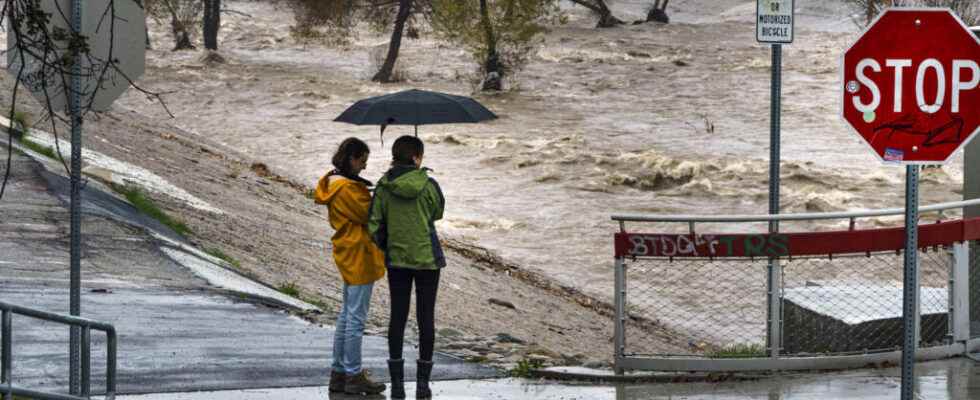Since mid-December 2022, California has been experiencing unprecedented climatic conditions, with episodes of rain and no less than five storms in just over a month, notably caused by “steam corridors”. The rains caused at least 19 deaths. Christophe Roncato Tounsi, environmental historian, lecturer at Grenoble Alpes University, analyzes the phenomenon and its consequences.
RFI: How do you analyze these different episodes of heavy rain in California ?
Christophe Roncato Tounsi: I think the repetitive nature of the precipitation that fell as rain or snow in California needs to be emphasized. No less than four or five successive waves since December 26 have swept over the state. And of course, this is fueled by global warming and temperatures in the red, humidity high in the atmosphere which reinforces the exceptional character of this precipitation.
There is a lot of talk about atmospheric rivers these days. Can you explain what it is ?
It’s a term that’s been around since the 90s. It’s been heard a lot about it in the California context and it manifests itself in higher humidity in the atmosphere which results in a dumping of rain and snow that’s equivalent to big rivers of the planet such as the Amazon or the Nile. Consequently, this causes considerable damage to the infrastructures, the population, the vegetation…
► To read also: United States: a series of deadly deluges hits California
Also referred to as steam corridors. Is it the same?
Yes, these are identical phenomena that underlie the current precipitation.
Is there a human responsibility in these phenomena?
I believe it is double. Of course, these are human activities as a whole, linked to the various economic sectors which emit, as everyone knows, a certain quantity of greenhouse gases. So there, it is not the responsibility specific to California, it is a systemic and collective responsibility. But we can also point out certain responsibilities in California, for example, the fact that we tend to build in areas that are subject to flooding. This is something California public policy should work on to prevent flooding from causing disproportionate damage.
Because today’s water retention infrastructures, dykes, artificial lakes are no longer adapted to today’s world?
The infrastructures are adapted to the climate of the 20th century, but not of the 21st century. Thus, the extremes are reinforced in the current context and the infrastructures are struggling to resist.
With the addition of a drought that has raged throughout the American West, particularly in California, therefore soils that are extremely arid and that cannot absorb such a quantity of water. Can we make the connection with global warming?
Climatologists have been telling us for a long time now that global warming will reinforce the extremes. There, we have a perfect example of what is happening on a global scale. I think we have to make the connection. We see that in the American media the link is not made systematically.
Does this mean that these extreme phenomena are bound to repeat themselves again and again?
Absolutely. The new normal is emerging in these scenarios, extreme hot, extreme rainy, extreme snowy. And again, the scientists working on these climate changes are telling us. We are dealing here with what some have called a climatic boost, namely that everything will come suddenly, with environmental consequences. We also speak, for example, of the erosion of the coasts with unleashed water.
From a human point of view, who suffers these phenomena repeatedly?
Everyone is impacted. We have counties like Santa Cruz that are quite wealthy, with a population that can work in the big high-tech industries. These people have been impacted.
But in fact, conversely, the minorities, the less well-off people, cannot cope…
If we take the example of San Francisco, we realize that mainly, people who live outside are of course the most exposed to risks. And then we also know that certain areas going from the south of San Francisco to Los Angeles will have more difficulty in rebuilding their infrastructures because they are often underfunded.
California, it is repeated very regularly, is at the forefront of the fight against global warming with its Democratic governor. What is actually done? Is it sufficient ?
California has this reputation, and rightly so, of having always been proactive in environmental matters. If we look more specifically at the climate, we see that under the impetus of Governor Arnold Schwarzenegger in the 2000s, a climatic turning point has been taken. Very serious scenarios, influenced by science, emerge from 2007, 2008. Is it enough or not? This is a question that needs to be asked. Nevertheless, we can wonder about certain points of these scenarios which tend to want to stay the course in terms of economic growth.
